LUMITEX Clad Flat FiberTM TECHNOLOGY:
Lumitex lighting technology is designed for thin profiles – thickness options include 0.20 mm (0.008″), 0.30 mm (0.012″), and 0.45 mm (0.018″) exclusive of LEDs, traces, and any additional layers such as diffusers or reflectors.
LEDs can be mounted to printed circuit board and mated to our 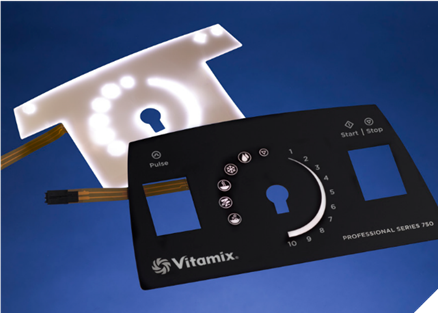 light guide, or Lumitex can develop plug-and-play backlight solutions integrating the light guide, reflectors, surface-mount LEDs, drive circuitry, connectors, diffusers, and mounting adhesives. All are engineered into one, thin backlight assembly.
light guide, or Lumitex can develop plug-and-play backlight solutions integrating the light guide, reflectors, surface-mount LEDs, drive circuitry, connectors, diffusers, and mounting adhesives. All are engineered into one, thin backlight assembly.
Unusual shapes, through-holes, multiple LEDs, and multiple colors are all possible with Lumitex CFF technology. Virtually any two-dimensional shape or size is possible without the need for tooling. Multiple through-holes in the backlight enable custom fitting into complex assemblies without sacrificing lighting uniformity.
Embedded LEDs improve optical coupling and efficiency and this solution can shrink costs by reducing part count and simplifying assemblies, while offering reduced thickness and improved product functionality.
It withstands temperature extremes from -50º C to over 100º C and LED-based low-voltage DC products are often designed to last the life of the application.
Simple design guidance on integrating Lumitex thin clad fiber LED integrated light to light up functional graphics.
For LED Placement on Clad Flat Fiber careful optical alignment of the LED determines performance results.
Vertical LED Height- alignment with 0.45 mm Clad Flat Fiber optical core should be aligned with the center of the LED.
For more information on application contact Lumitex or write to designhmi@gmail.com
Lumitex Clad Fiber can offer brightness of 24.1 Nits with uniformity around 29%.
Different variations as below:
- CF3 Clad Flat Fiber PMMA: Typical construction flat fiber, loose back reflector and LED mounted to FPC.
- CF4 Clad Flat Fiber PMMA: Printed with integral back reflector which eliminates need for a back reflector reducing costs with a 20% lower output.
- CF5 Clad Flat Fiber PMMA: Printed with integral back reflector and printed conductive traces which optimizes LED coupling and simplifies electrical connection.
- PCF3 Clad Flat Fiber Polycarbonate: Its more elastic, flexible and durable properties compared to CF3 (PMMA) with 20% lower output.
- PCF4 Clad Flat Fiber Polycarbonate: Printed with integral back reflector eliminates need for a back reflector reducing costs with a 20% lower output. CF5 Clad Flat Fiber Polycarbonate: Printed with integral back reflector and printed conductive traces which again optimizes LED coupling and simplifies electrical connection.
In most cases LED placement (tolerance of +/- 0.1mm).
Electrical tracings will add no more than .035mm +/- .005 mm to the height of the CFF panel. Embedded LEDs are .4mm in height. With a UV coating the entire LED construct will be .7mm.
Thin Film Lightguide
In trying to integrate and create a single piece styled input device like Overhead Console, Dome Light, Switch Assembles and others, backlighting is a key challenge. In current design backlighting is either through LED’s on PCBA or LED’s directing light through thick Acrylic or PC light guides.
Thin Film Lightguide (TFL) is a good design solution. One design option could be as below:
- High durometer Elastomer with piano black dead font finish.
- LGF on B side of elastomer for backlighting of graphics.
- Printed flexible circuit with SMD components and Micro.
- Piezoelectric devices on flex circuit for both input and tactile feedback.
- The assembly sealed in back with low pressure silicon mold or other methodology.
Thin Film Lightguide is a thin layer that can be placed over metal domes and spacers to provide uniform backlighting nearly anywhere on the graphic overlay of your product.
Thin Film Lightguide Film is a 0.005-0.020“layer that incorporates microdots pressed into the imaged areas that are to be backlit. Cutouts are made in the film to place side view LEDs at the appropriate location. The light rays from the side view LED travel through the film and are refracted upwards towards the surface of the overlay once it hits the microdots, producing a uniform backlighting effect.
Right angle LEDs are used is thin light guide film and they need to be butted up against the edge of the light guide film (whether the actual edge of the light guide or an edge inside a cutout in the light guide).
A back reflector is utilized to further capture any light that is transmitted downward from the light emitting surface. Opaque materials can be utilized to block light in undesired areas
FLEx has technology to convert thin plastic into light source. It inserts light in plastic films thinner than a piece of paper. It then radiates light from the film exactly where it is needed. This new light guiding technology uses off-the-shelf commercial LEDs, which allows FLEx to take advantage of ongoing LED innovations and improvements, directly augmenting and enhancing its lighting solutions.
a piece of paper. It then radiates light from the film exactly where it is needed. This new light guiding technology uses off-the-shelf commercial LEDs, which allows FLEx to take advantage of ongoing LED innovations and improvements, directly augmenting and enhancing its lighting solutions.
FLEx lightguides are as thin as 50um to deliver flexibility.
Lumitex Clad Flat Fiber™ (CFF) technology utilizes a tri-extruded film in thicknesses of 0.2mm, 0.3mm or 0.45mm. The core material is acrylic or polycarbonate, and the tri-layer construction adds significant value. The cladding layers provide total internal reflection through the core until we modify it per your needs. The CFF technology allows for a printed back reflector to lower total thickness and improve ease of assembly.
Abatek has also developed improved light distribution which allows for uniform distribution of light regardless of distance from LED’s. It also allows segmentations of areas to avoid light leakage between areas or colors.
Their Light Guide Sheet (LGS) is only 1 mm thick and based on advanced silicone technology. LGS has better light transmission than LGF and is a better alternative compared to traditional Polycarbonate light guides. Thinner with excellent light transmission, targeted light exit spots and perfect for segmentation through light barriers. These can be Ultra-thin (.125 – .30 mm thick) for LGF and thickness 1.0 mm for LGS.
Ever-thinner light guides came in the form of light guide films made from PLEXIGLAS®”, says Markus Parusel, expert for light guide films at Evonik. The restraining factor is no longer the thickness of the material, but the availability of very thin light-emitting LEDs that are positioned at the side and their construction height must be perfectly fitted to the film edge.
Planetech International Nano-Imprinted Light Guide Films are Nano-Imprinted onto thin, flexible translucent film substrates, light is guided in uniform or custom patterns creating various required lighting effects designed by computer software.
Nicrotek Light Guide Films (LGFs) are designed for effective use of LED edge light sources. Light from the LED sources is internally reflected down the length of LGF to the various viewing areas. The Localized Micro-Lens Arrays redirect light out of the film to the viewer only where it is needed (to each logo, image, key or button) by layout design. This new technology patterning allows light to be efficiently and uniformly directed where light is desired in a very low-profile film.
Design LED use optically transparent acrylic as light-guides allowing the potential to integrate multiple light-guides on a single substrate. In this approach, an opaque polymer layer is used to form a cavity into which the individually printed and laser cut acrylic optics are dispensed. This optically opaque cavity material serves to isolate adjacent light-guides preventing any light bleed.
Ideal for capacitive or other electronic sensing technologies is achieving switch graphic illumination without interfering with the electric fields.
An LED embedded in the light-guide, with the capacitive switch electrode layer in LED interconnect layer within the light-guide structure. This approach can result in increase in optical efficiency with reduction in the required number of LED components and potential reduction in total system costs.
For more design details click Thin film backlighting technology for user interfaces and illuminated panels describing how Design LED working with Stadium IGT have pioneered the use of optically transparent acrylic as light-guides.
Design HMI is working to develop best solution to integrate thin flexible lighting with Class A finish and flexible electronics. Contact designhmi@gmail.com for more information
- 0.2, 0.3, 0.45 mm thickness
- SMT LED’s
Flexible:
- Easily bent, shaped
- 3-D forming, with minimal tooling
- Platform for emerging switch technologies
Integrate features:
- Adhesives, Printing, Mechanical Features
- Switch Circuitry
Optical flexibility:
- Put light where it’s needed
- Optimize system uniformity with CCD camera
Rapid prototypes:
Initial design iteration:
- 3-4 weeks
- Low lead time
Low Tooling Cost:
- No molds, just fixturing
For further review contact: http://www.lumitex.com/


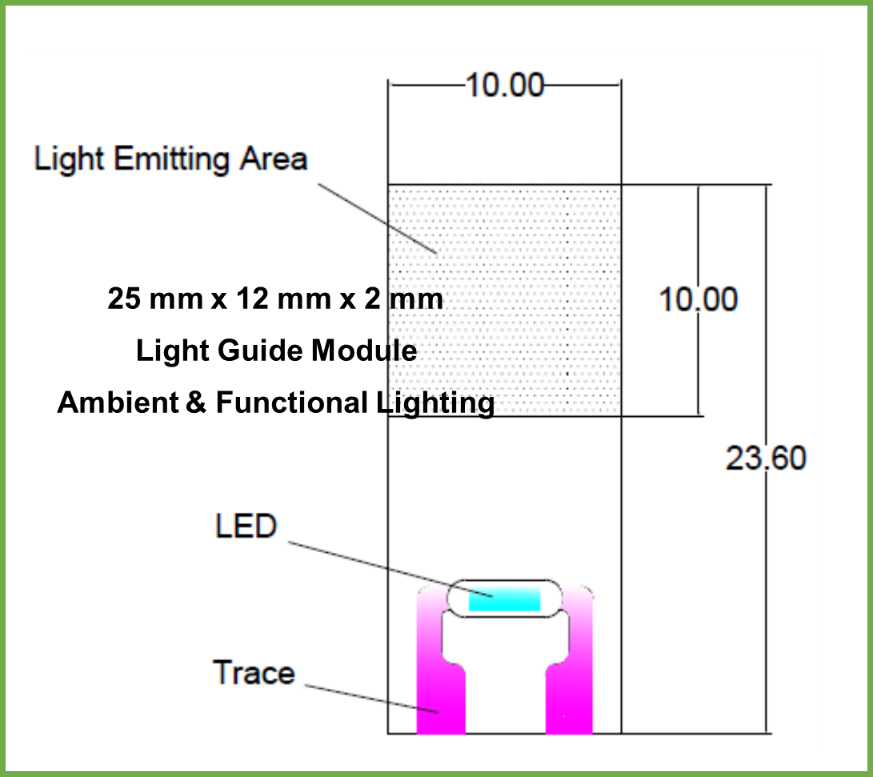

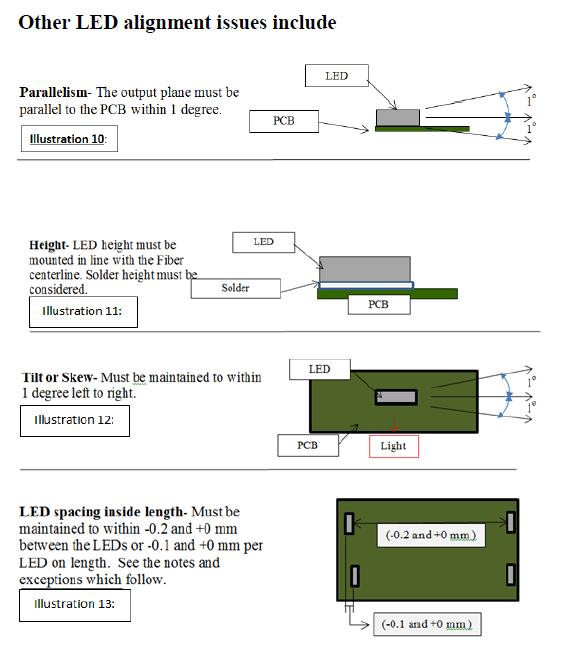
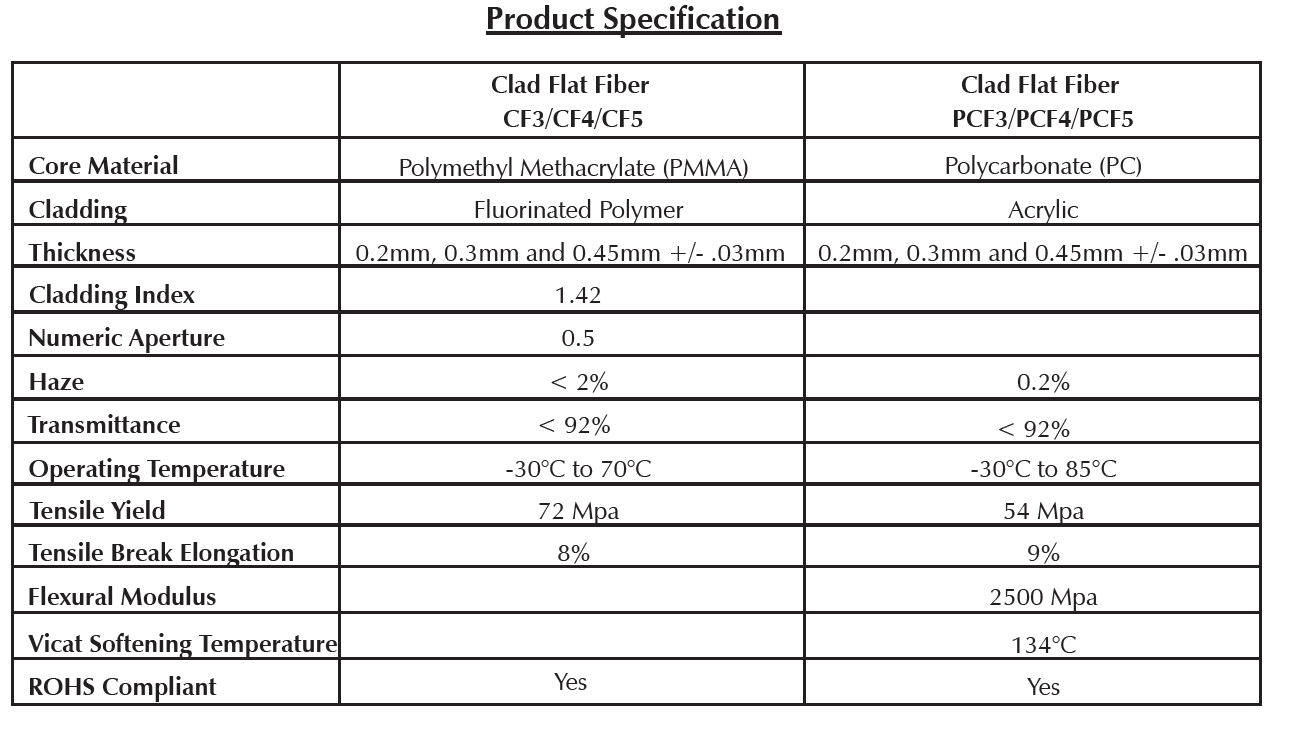
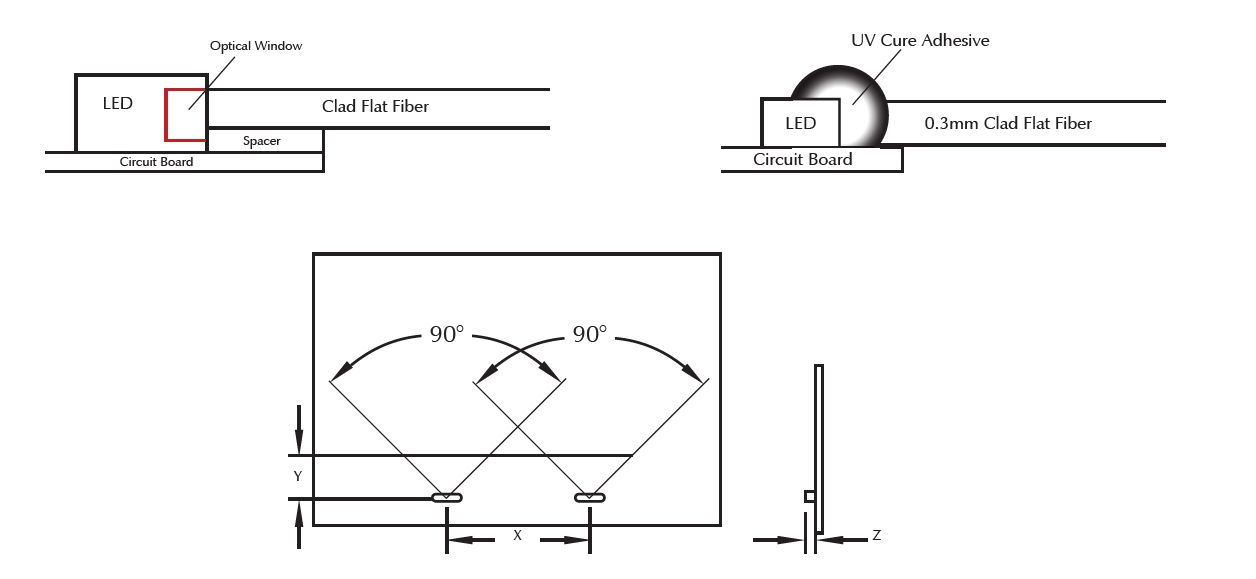


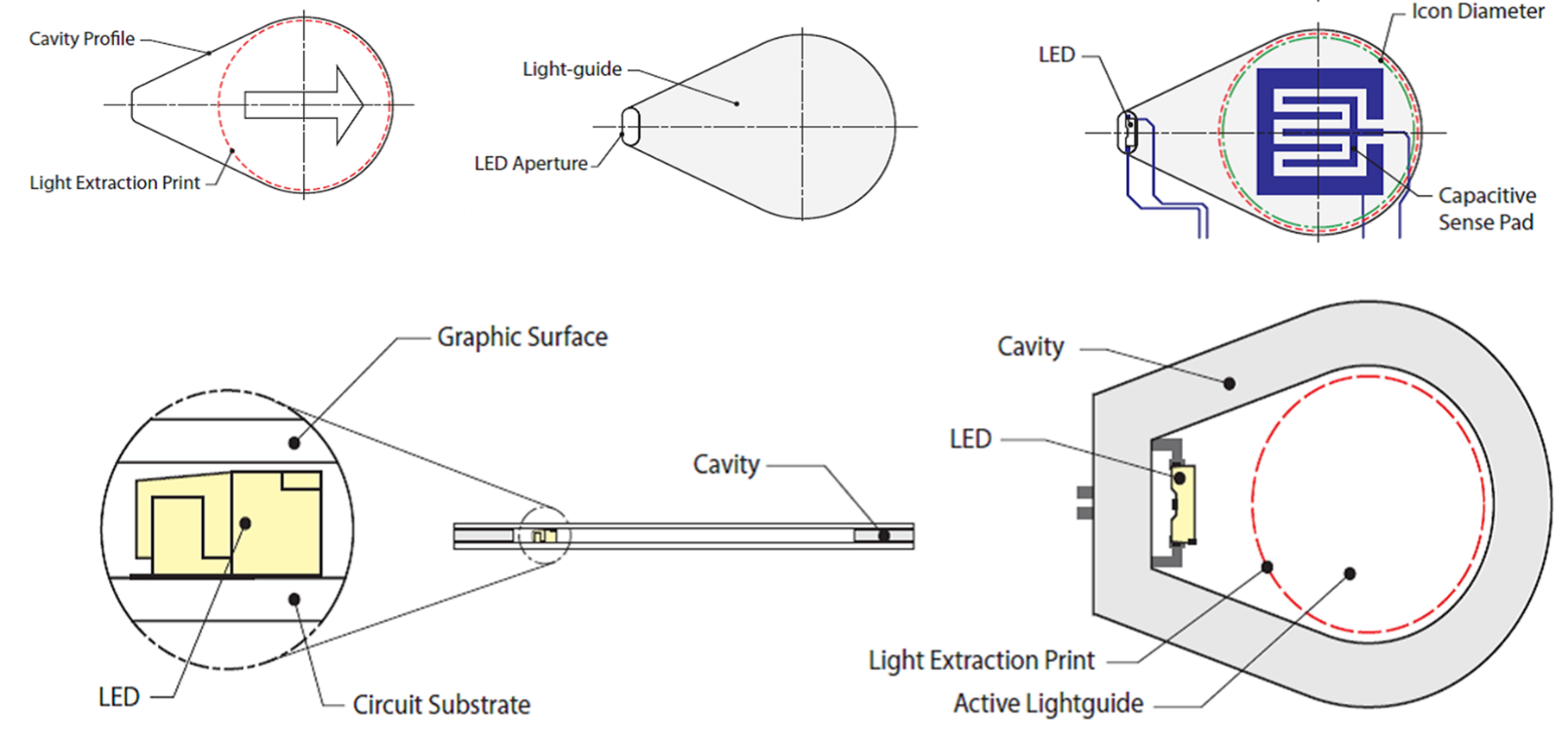



We are a group of volunteers and opening a new scheme in our community.
Your web site provided us with valuable info to work on. You have done a formidable job and our whole community will be grateful to you.
my blog post :: AC Repair Thousand Oaks – AC Repair Westlake Village
I constantly emailed this blog post page to all my contacts, because if like to read it then my
friends will too.
Also visit my website; AC Repair Moorpark – Refrigeration Air Conditioning Thousand oaks
Magnificent website. Lots of helpful info here. I am sending it to
several pals ans also sharing in delicious. And naturally, thanks on your sweat!
Also visit my web blog; Paramotor – Paramotoring Equipment
I’m really impressed along with your writing skills and also
with the layout on your weblog. Is this a paid topic or did you customize it your self?
Anyway stay up the nice quality writing, it’s uncommon to look a nice blog like this one today..
My web blog AC Repair Simi Valley
Admiring the hard work you put into your blog and in depth information you provide.
It’s nice to come across a blog every once in a while that isn’t the same old rehashed
material. Fantastic read! I’ve bookmarked your site and I’m including your RSS feeds to my Google account.